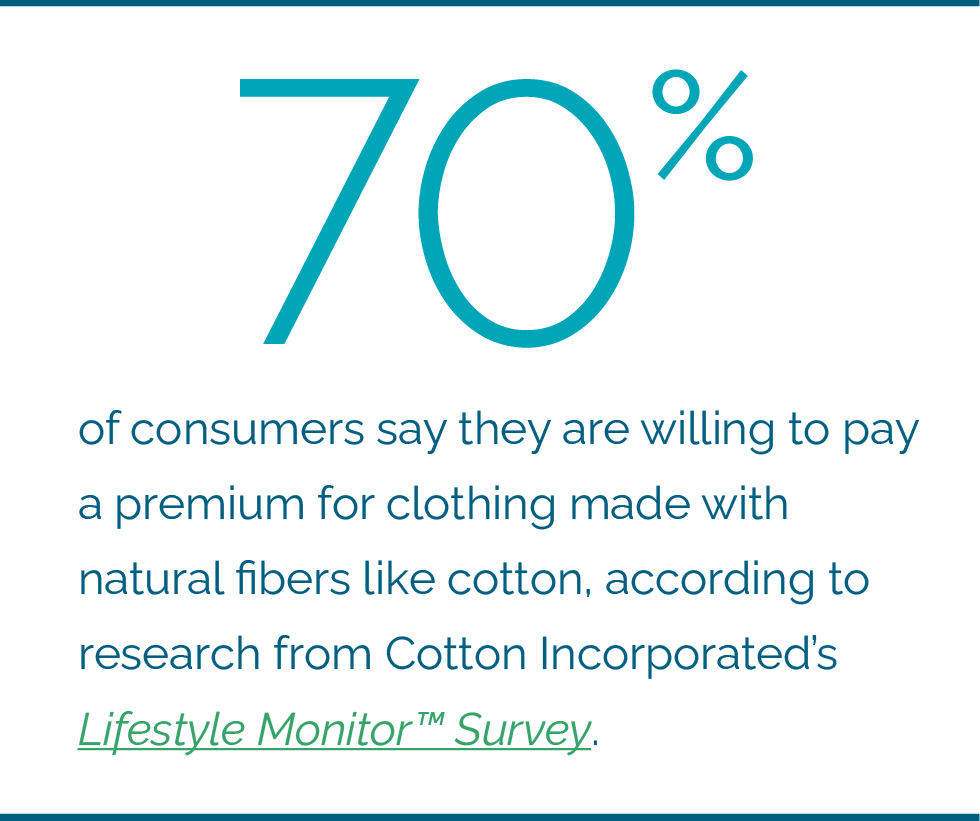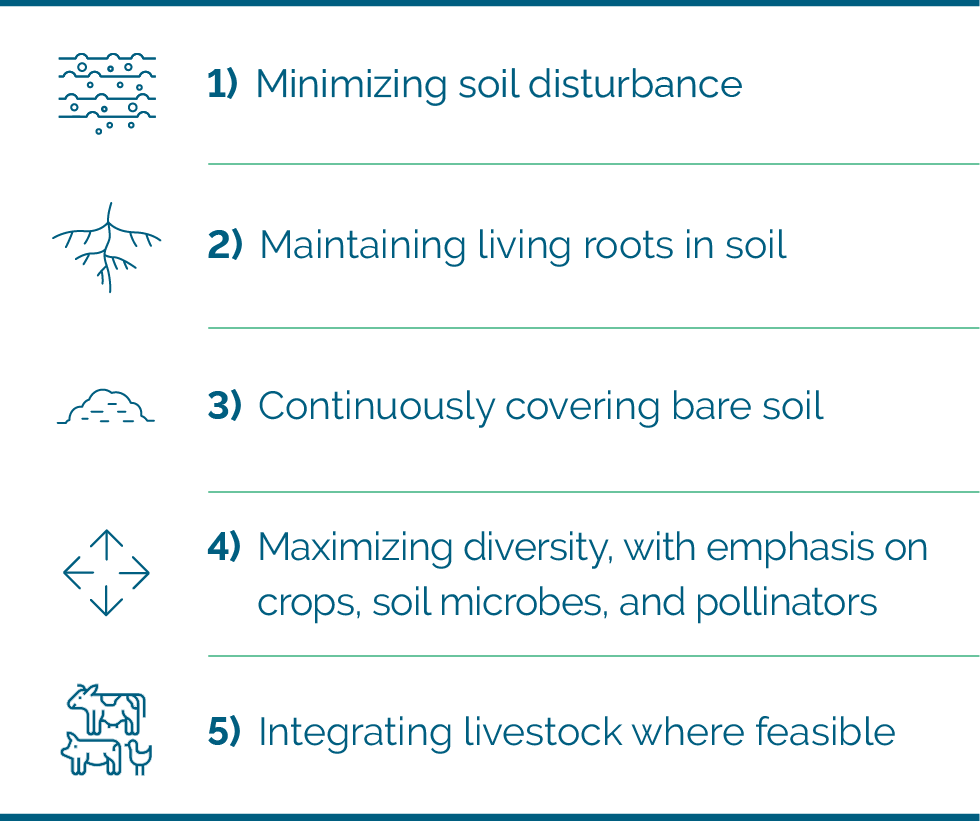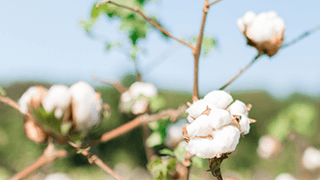Regenerative Agriculture
Cultivating a Sustainable Future
Consumers care about the sustainability of the materials they wear every day. Ongoing consumer research from Cotton Incorporated shows they’ll back that up with their wallets too. Brands that pursue sustainable sourcing and greenhouse gas (GHG) reduction goals are not only doing what’s good for business, but also what’s right for the earth.
It is both a risk and a missed opportunity if apparel companies don’t consider the positive and negative impacts occurring at the beginning of their supply chain — which, for cotton, means on the farm. The U.S. cotton industry is enabling more farmers to learn about and adopt an approach to sustainable farming called “regenerative agriculture.” As demonstrated below, farmers who implement this approach can not only reduce environmental impacts from cotton production but also actively work to restore important natural resources.
The benefits of regenerative agriculture bolster brands’ efforts to improve sustainability within their supply chains. When brands support regenerative agriculture, they gain a sustainability story worth sharing with consumers and investors.
Sustainable Agriculture and Regenerative Agriculture: Understanding the Basics
Field to Market: The Alliance for Sustainable Agriculture provides a big-picture definition of “sustainable agriculture”: “meeting the needs of the present while improving the ability of future generations to meet their own needs.” This encompasses the need for increased productivity to meet the needs of a growing population, as well as environmental, human health and community benefits.
Field to Market describes “regenerative agriculture” in a complementary way that digs deeper: it is a suite of principles that can “sequester carbon in the soil and intentionally improves soil health, biodiversity, water quality and air quality while ensuring the viability of farm production.”
Regenerative agriculture is a holistic approach to meeting the needs of the land, the farmer, and the supply chain. Farmers taking this approach to being sustainable consider how each management practice they use impacts the whole system.
For example, instead of treating fertilizer application, irrigation and pest management practices as separate issues, farmers might think about how using cover crops will add nutrients to the soil (thus reducing their fertilizer use), improve soil structure so it absorbs water more effectively (enabling them to be cut back on irrigation), and disrupt the life cycle of cotton pests (proactively addressing insect management through crop diversity). They can also think about managing livestock as a source of natural fertilizer, and research indicates that foot traffic and grazing from cattle when managed properly can provide benefits to soil health as well.2
Soil health is central to regenerative farming
Healthy soil is vital for cotton production, and there is a good reason why soil is explicitly mentioned in four of the five regenerative agriculture principles. The physical, chemical and biological properties of healthy soil foster a diverse ecosystem of beneficial organisms like earthworms, mitigate erosion, absorb and store water, and cycle essential plant nutrients. Healthy soils help increase water use efficiency, land use efficiency, fertilizer efficiency, and carbon storage.
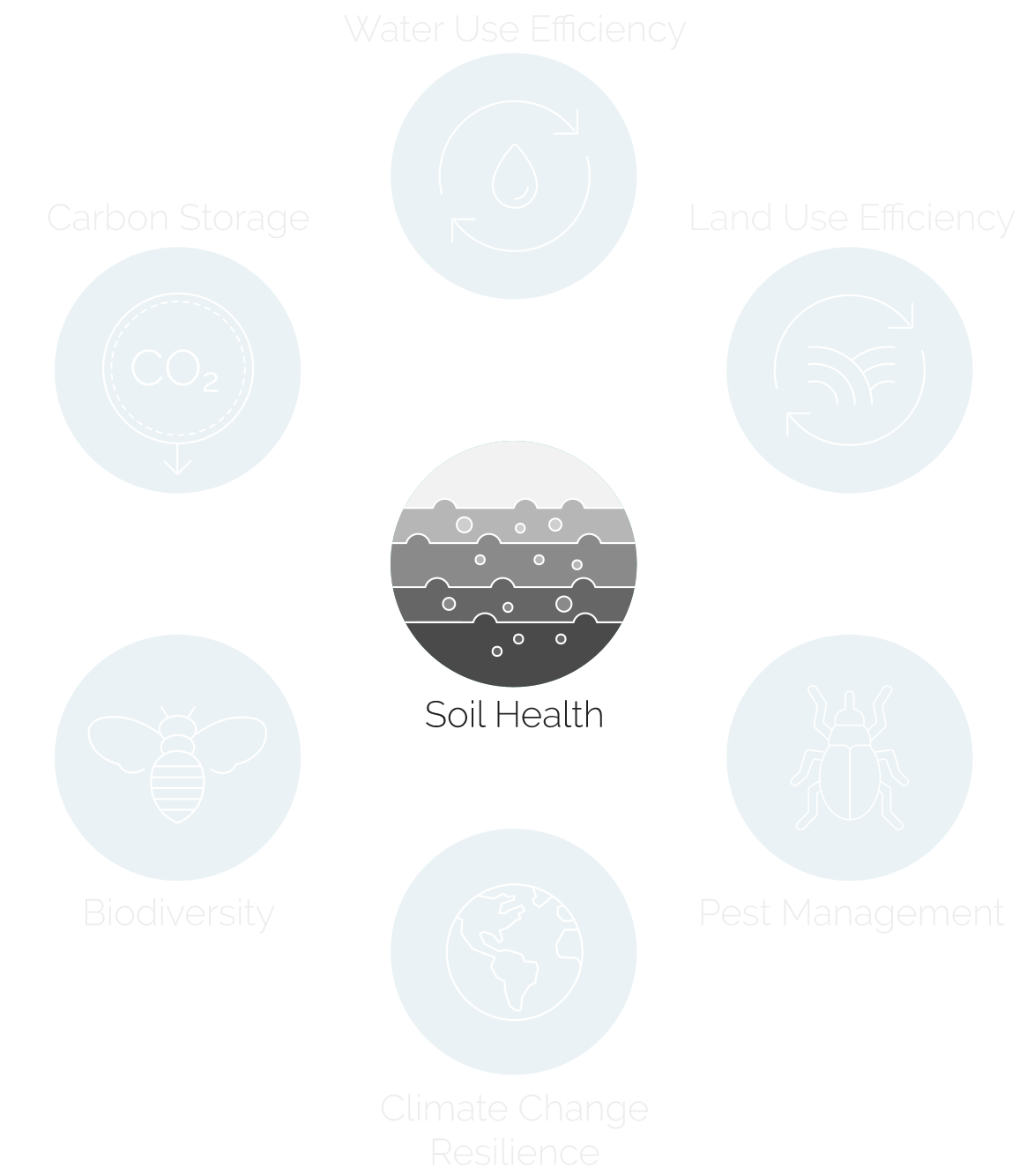
Connecting soil health and climate action
The Soil Health Institute is an important global voice in regenerative soil health research and education. In this webinar, the Soil Health Institute’s Chief Scientific Officer Cristine Morgan, Ph.D., discusses how regenerative agriculture management, with soil health at the center, tackles the effects of climate change in multiple ways. (Download Cotton & Soil Health presentation slides.)
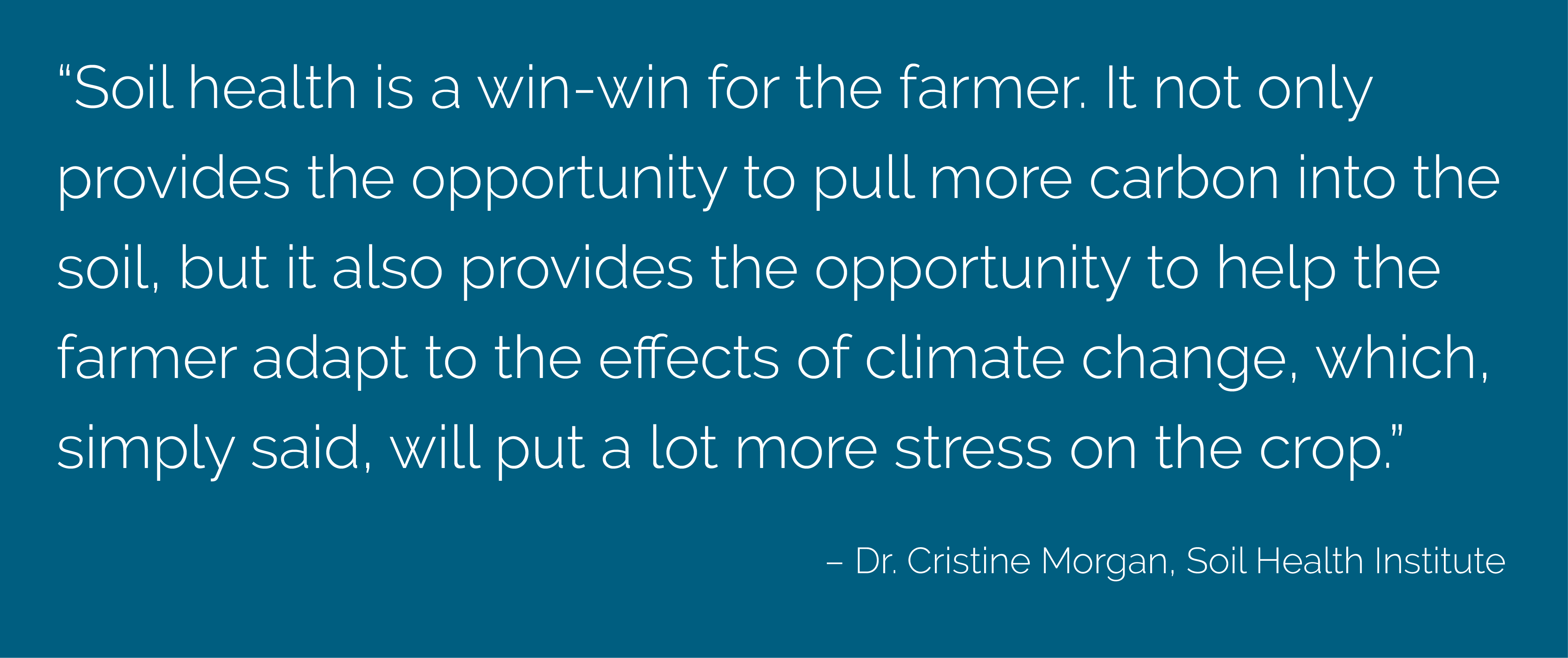
Cultivating Near-Term and Long-Term Benefits
Regenerative ag can create immediate environmental benefits (for instance, reduced fuel use due to reduced tillage) and benefits that develop over time. Improving soil health helps growers nurture the long-term productivity of the land and build resilience to extreme weather and other effects of climate change.
Farmer surveys and economic analysis have demonstrated that regenerative ag practices can support cost savings and competitive yields, and help growers build economic resilience, too. In a 2022 study by the Soil Health Institute, implementing soil health management practices generated an average cost savings of $47 per acre and an increase in net income of $100 per acre for cotton growers.3 Additionally, growers adopting conservation tillage or strip/no-till practices often have higher cotton yields compared to those using conventional tillage practices. Further yield benefits were reported from farmers using winter cover crops compared to those who don’t apply this conservation practice.4
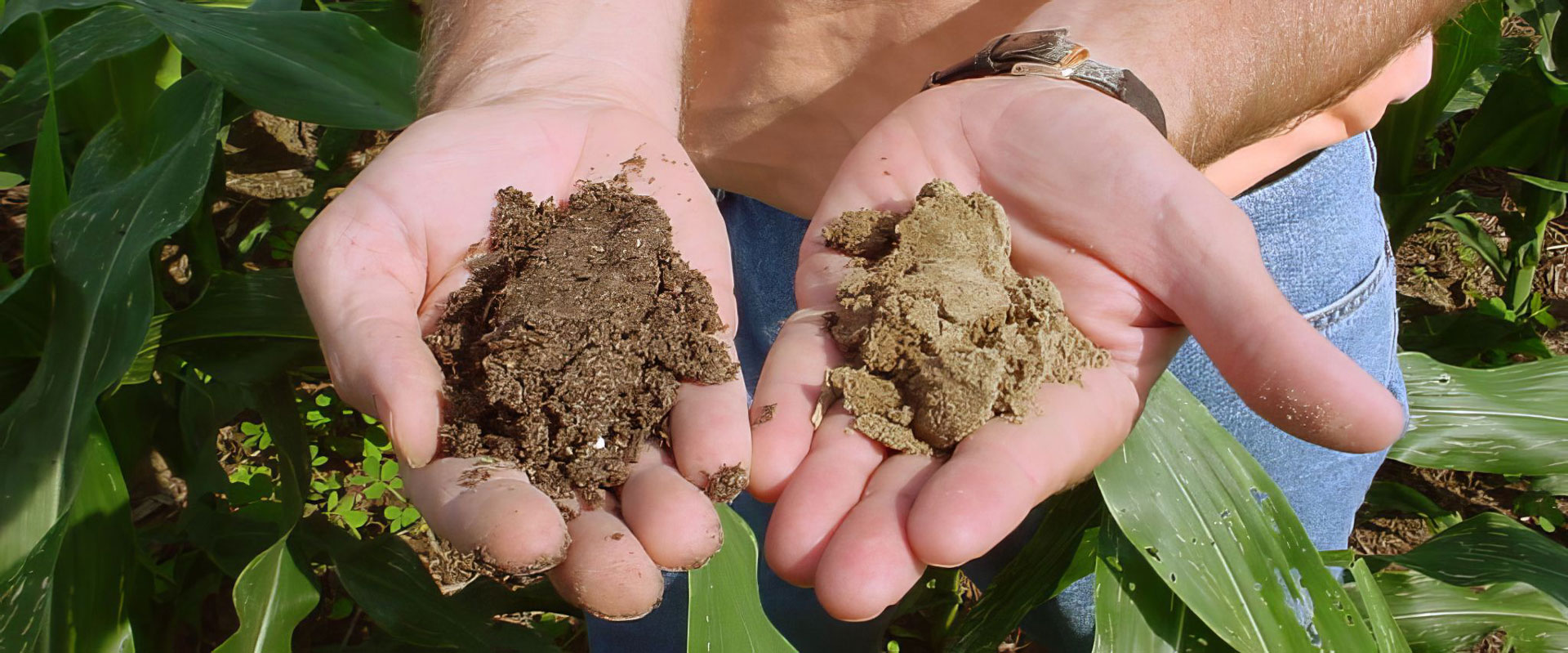
Digging into Regenerative Agriculture Practices
Some of the more commonly implemented and researched regenerative cotton agriculture practices include the following.
Cover crops
Cover crops are typically grown between cash crop cycles. For example, a cotton grower might plant winter wheat after the cotton harvest and grow it until time to plant cotton the following spring. Researchers are also exploring how to use “living mulch” — cover crops that are grown alongside cotton. Cover crops can advance all five of the regenerative agriculture principles, including helping growers integrate livestock. The plants’ canopy and roots reduce soil erosion, suppress weeds, foster soil microorganisms, and increase organic matter and carbon sequestration.
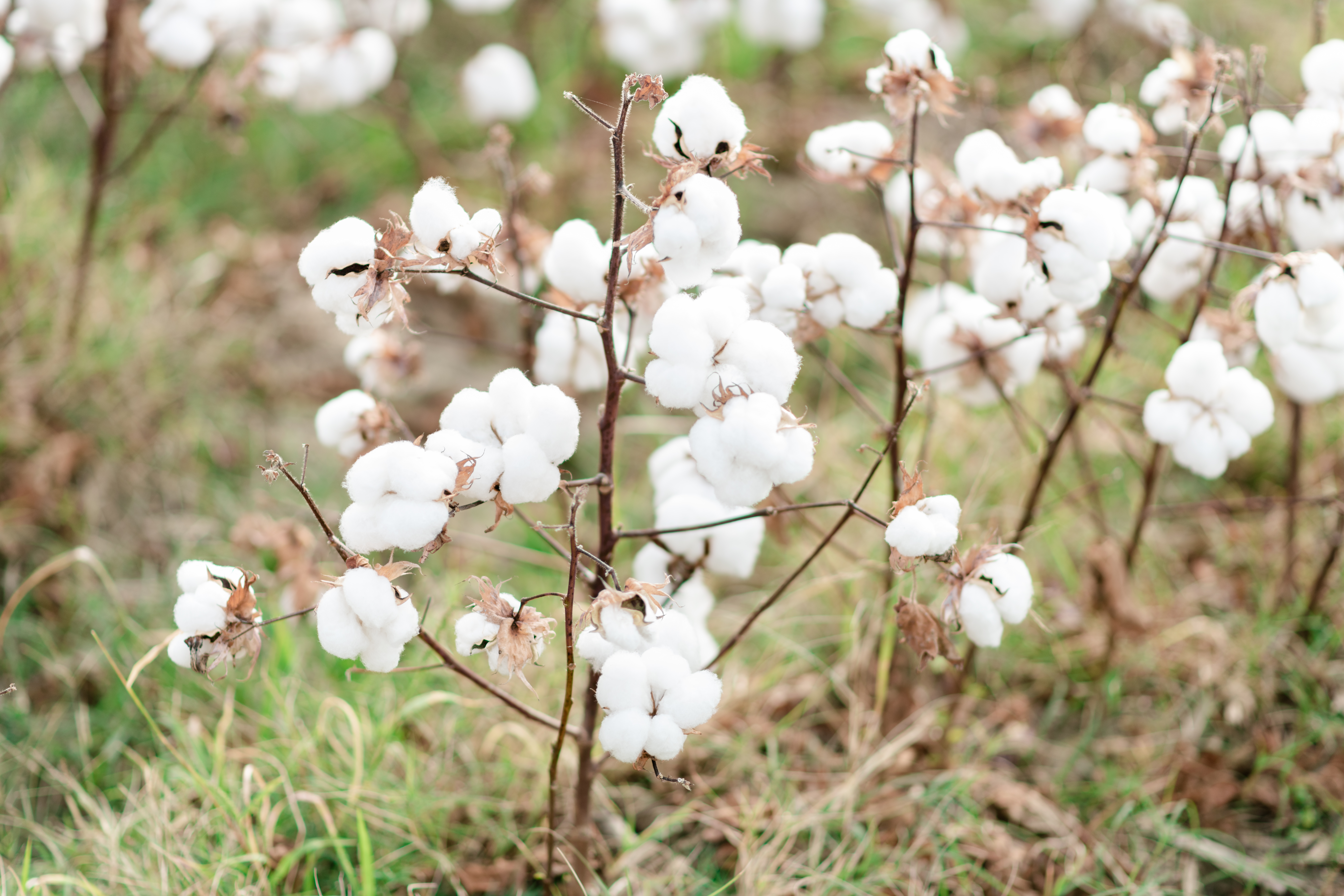
Conservation tillage and no-till
Conventional tillage involves tilling the soil during the growing season to control weeds and plowing the crop residue after harvest. Doing so regularly, however, destroys the soil’s structure. This causes the soil to become more vulnerable to erosion and unable to filter and store water as effectively. To decrease erosion, increase organic matter in the soil, and help increase soil carbon accumulation rates, growers practice conservation tillage — reducing the number of times they till and minimizing soil disturbance — or no-till. In the latter, they do not plow unless specific factors like soil compaction make it necessary. Reducing tillage significantly reduces growers’ fuel use, too. Between the 2008 and 2017 Cotton Incorporated Natural Resource Surveys of U.S. growers, use of no-till/strip-till practices increased by 9%.5
Crop rotation
Many cotton growers do not solely cultivate cotton. They strategically grow different crops in a specific sequence to enhance soil fertility, disrupt pest and disease cycles, and improve soil structure. For example, they may rotate cotton with corn, soybeans, and peanuts, which infuse nitrogen into the soil, reducing the reliance on synthetic fertilizers. By diversifying the crops, growers also foster more diversity in insects and soil organisms. Crop rotation is also an economical and strategic way to manage pests and diseases.
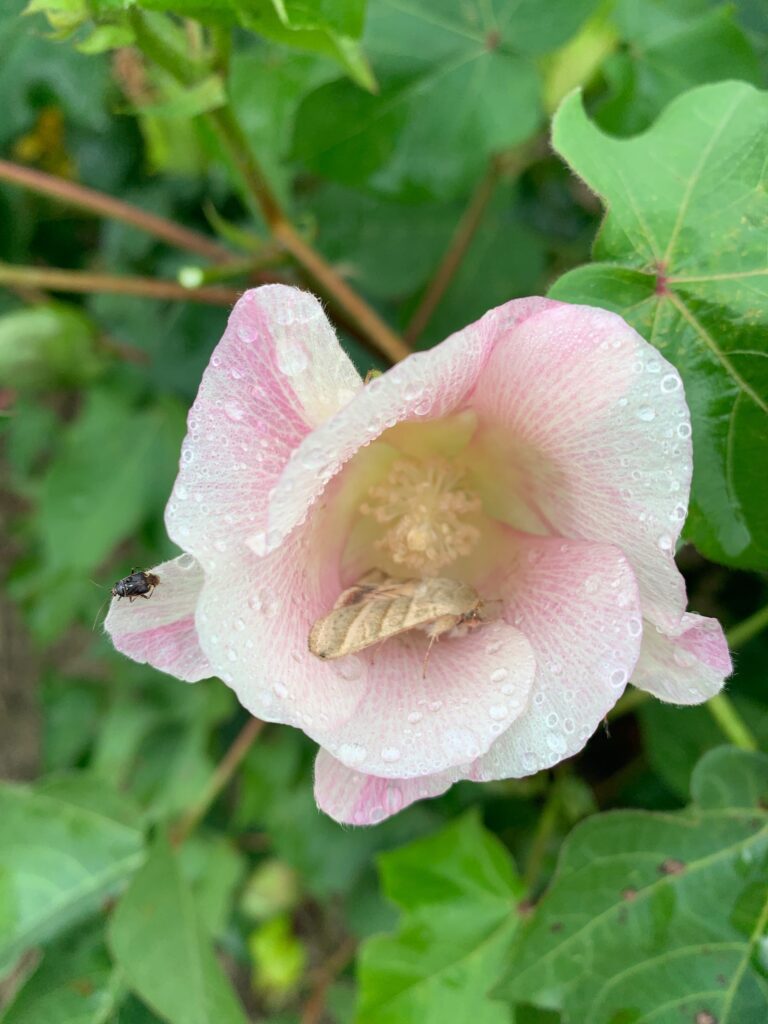 Integrated pest management (IPM)
Integrated pest management (IPM)
According to the University of California Statewide Integrated Pest Management Program, IPM “focuses on long-term prevention of pests or their damage through a combination of techniques such as biological control, habitat manipulation, modification of cultural practices, and use of resistant varieties.” Farm management practices like conservation tillage and crop rotation as well as precision agriculture, biological control, and transgenic technologies are also common elements in IPM. Growers use data gathered through monitoring to determine if, when and where pesticide is needed, which can help protect local biodiversity.
Biodiversity conservation
Many agricultural practices that improve soil health, prevent erosion, and improve water use efficiency or water quality have a positive effect on biodiversity. The same is true in reverse: practices that enhance habitat for microorganisms, insects, and wildlife also help farmers improve nutrient cycling, erosion control, pollinator services, and water infiltration. The United States Department of Agriculture (USDA) Natural Resources Conservation Service (NRCS) provides technical and financial support to growers who adopt practices that enhance on-farm biodiversity.
Meet a Cotton Farmer
An Approach, Not a Checklist
While the practices described above are relatively common, it is unlikely that growers will implement the same regenerative farming techniques in the same way, at the same time. There is no official checklist or prescriptive playbook for regenerative cotton agriculture. The U.S. Cotton Belt — the region where cotton is grown — stretches across 17 states and significantly more soil types, watersheds, ecosystems, and local climate patterns. Growers on the Texas High Plains and those on Alabama floodplains will encounter different challenges and opportunities for sustainability. Some practices are more environmentally beneficial or economically viable in certain areas of the country or during certain weather conditions.

optimize cover crop management
For example, Dr. Katie Lewis researches how to optimize cover crop management in semi-arid regions.6 She’s also investigating opportunities for growers in those regions to benefit by integrating livestock. University of Tennessee Extension Cotton Specialist Dr. Tyson Raper, on the other hand, is researching whether wet weather conditions around harvest time may necessitate adding tillage in otherwise no-till fields to counteract soil compaction and enable more efficient land, water, and nutrient use over time.
Meet a Cotton Researcher
The Necessity of Ongoing Research
That degree of difference between climates, soils, and more across the U.S. Cotton Belt makes ongoing research in regenerative ag critical. Academic, non-profit, and industry researchers continue to discover more effective ways to implement these practices on-farm across the country.
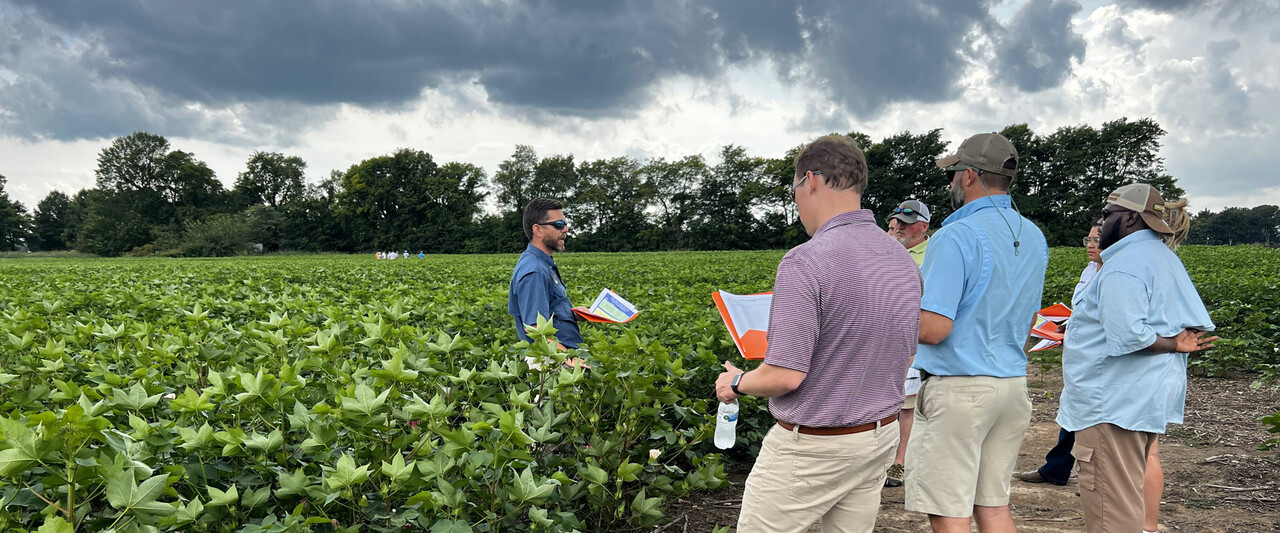
Dr. Tyson Raper, cotton and small grains specialist, The University of Tennessee
For example, research from North Carolina continues to investigate the link between reduced tillage and soil health7 and erosion.8 The USDA-ARS Soil Dynamics Lab in Auburn, Alabama, studies cover crop systems and benefits in the context of Southeastern states,9 while the University of Arkansas Cotton Research Verification Program field-tests the profitability of cover crops and other practices within that mid-South state.
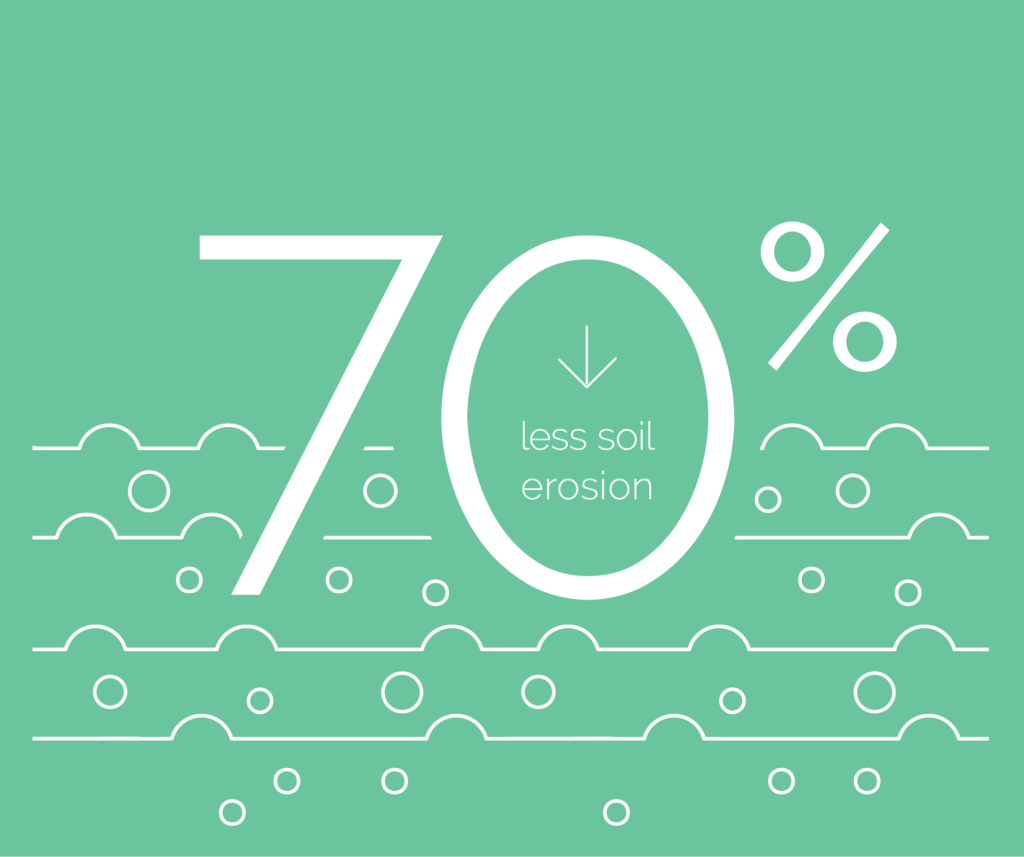
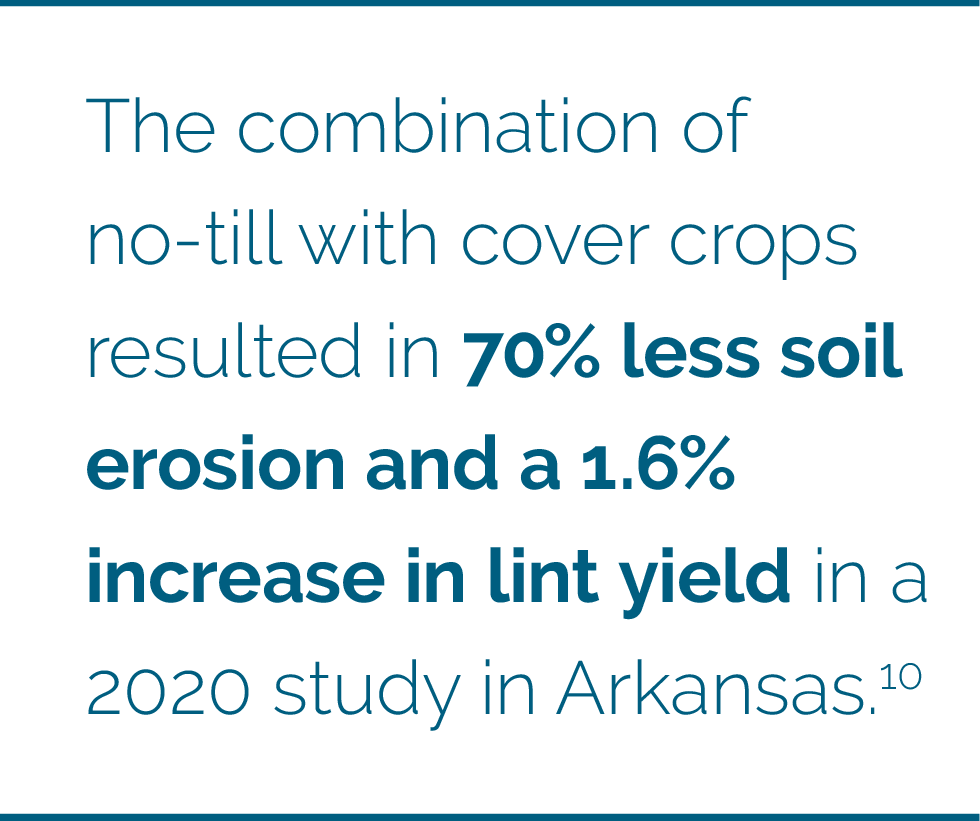
More research is also being focused on soil carbon, simultaneously an indicator of soil health and an important tool for both climate change adaptation and mitigation. Texas A&M researchers are working to quantify soil carbon that is captured and that escapes from the soil during cotton production.11 Another study published in 2023, coauthored by researchers from 13 different institutions, demonstrates that cover crops significantly increase soil organic carbon. It also helps the cotton industry better understand how various environmental and farm management factors can affect cover crops’ abilities to sequester carbon in the soil.12
Advancing Research, Outreach and Results
Organizations like Cotton Incorporated play an important role in advancing regenerative ag research — including many of the projects mentioned above — and engaging growers in learning about and implementing practices that will work on their specific farms. Two significant initiatives in grower engagement include the U.S. Climate Smart Cotton Program and the U.S. Regenerative Cotton Fund.
U.S. Climate Smart Cotton Program
This five-year pilot program provides technical and financial assistance to enable 1,600-plus U.S. cotton growers to transition to “climate smart” practices on more than a million acres across the country.
As defined by the USDA, primary climate smart practices for cotton include “cover crops, conservation tillage, nutrient management and other soil health practices” — in other words, a variety of regenerative agriculture practices that help growers reduce greenhouse gas emissions and improve carbon sequestration.
This program is led by the U.S. Cotton Trust Protocol in collaboration with Cotton Incorporated, the Soil Health Institute, and other industry, non-profit, and academic partners. With $90 million of funding allocated, the program ultimately aims to engage enough growers to produce more than 4 million bales of Climate Smart Cotton and reduce emissions by more than 1 million metric tons of carbon dioxide equivalent over five years. The program also seeks to demonstrate $290 million in economic benefits to growers.
U.S. Regenerative Cotton Fund
Cotton Incorporated is also a contributing supporter and key collaborator in the Soil Health Institute’s U.S. Regenerative Cotton Fund. This initiative is designed to “encourage the adoption of soil health management systems across more than 1 million acres of U.S. cotton cropland.” Ultimately, it aims to draw down 1 million metric tons of carbon from the atmosphere by 2026 through regenerative cotton farming techniques.
How Brands Can Get Involved

Cotton Incorporated helps brands stay up to date on the continuous improvements being made across the U.S. Brands can also directly support Soil Health Institute programs like the Healthy Soils for Sustainable Cotton Project, which provides farmer-focused soil healthy education and training.
As researcher Katie Lewis explains, “Brands can learn about everything that’s already happening through organizations like Cotton Incorporated and the Soil Health Institute. They’re intermediaries between brands and researchers like me. Staying informed on the research will help brands be able to choose cotton with confidence.”
Keep exploring the resources available on CottonWorks™ to learn more about regenerative agriculture, other cotton sustainability efforts, and how these efforts fit into brand’s sustainability stories.
1Field to Market. Defining Sustainable and Regenerative Agriculture.
2Taboada, M., G. Rubio, E. Chaneton. (2011). “Grazing Impacts on Soil Physical, Chemical, and Ecological Properties in Forage Production Systems.” Soil Management: Building a Stable Base for Agriculture. Ed. J. L. Hatfield, T. J. Sauer.
3Soil Health Institute. (2022). Economics of Soil Health Management Systems on Five Cotton Farms.

